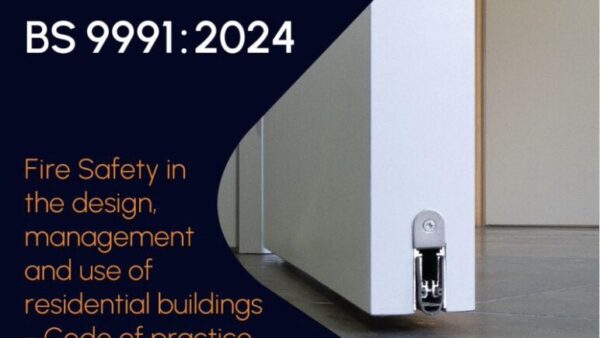Brian Ferguson RegAI on why fire door safety must go beyond compliance
In the realm of building safety, the role of fire doors is paramount: they are not just functional elements but critical safeguards that protect lives and property. However, the question we must all ask is: are we doing enough to ensure that end-users can effectively manage their fire door safety?
A fire door’s effectiveness during an emergency depends on the seamless integration of its components: the door leaf, frame, seals, hardware, glazing system, and ironmongery. The provision of clear and comprehensive specifications for each component used in fire door design is critical, yet they often fail to reach the individuals responsible for maintenance in the end-user environment.
Designers, specifiers, manufacturers, and fabricators should list every replaceable component with detailed sourcing information, including manufacturers’ part codes. Without this, facilities managers and estates teams struggle to maintain compliance, compromising safety.

Are we, as an industry, adequately bridging this gap? The project handover stage is a pivotal moment for fire safety in UK facilities. Providing comprehensive information at this stage is not just about compliance but about empowering end-users. For fire doors, essential handover information should include detailed specifications of each component used in the door design, manufacturers’ part codes, and clear references to where the components can be sourced. However, even when this information is provided, it is often buried in O&M manuals, inaccessible to those who need it most.
Consider your current practices: are the specifications you provide detailed and clear enough to be useful post-handover? Do they include all the necessary information to maintain the fire door’s certified status? Are you engaging with end-users to ensure they understand and can act on this information?
Technology to manage lifecycle
BS 8644-1:2022 offers a framework for managing fire safety information digitally throughout an asset’s lifecycle. Technologies like BIM and cloud-based asset management systems can revolutionise fire door lifecycle management, and significant progress has been made with the development of Product Data Templates (PDTs) for door systems, which standardise essential product specification data formats, ensuring consistency and traceability.
Ensuring that every replacement part meets the original specifications is crucial for maintaining the fire door’s effectiveness and compliance. Replacing fire door components with exact matches can and should indefinitely extend a door’s lifecycle without the need for full system replacement.
As designers, specifiers, manufacturers, and fabricators, we have a duty to impart our knowledge and expertise to end-users to help them manage lifecycle compliance. This not only meets regulatory requirements but ensures the highest safety standards in our built environment.
Brian Ferguson is the owner and managing director of FD Fire Door – Compliance Management Consultants.








